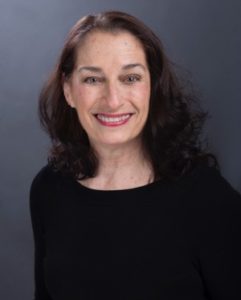
Photo by Markus Winkler on Unsplash.
Satya, truth, stands second in Patanjali’s list of virtues or “restraints.” Most often rendered with respect to speech, like ahimsa, satya broadens to include thought and deed. Under the rubric of ahimsa, the commentators advocate that truth not be spoken unkindly, for a factual statement that injures does not qualify as satya. Interpretations range from simply telling the truth at all times, everywhere, to refraining from reading fiction or frivolous speech.
सत्य satya, SUHT-yuh n. truth, reality . . . speaking the truth, veracity; truthful in thought, word and deed; oath; from sat (real, actual),
present participle (being) of √as, (be, exist); one who really knows the existence, clever in existence, firm within the unchangeable
Satya often seems limited, or perhaps “restrained,” to what we do, we think, we speak, we act—all doings. Don’t misunderstand me. I agree that truth in “doings” lessens dissonance and brings a semblance of harmony to the body-mind. For instance, being truthful with yourself in a Yoga class, listening to the body, mind and breath for signs of over-doing, for indications of what is needed, hearing the truth of what you feel, tuning in, are vitally important! And, maybe a new/ancient song wants to be sung.
Missing from my reading on satya was any definition of what Truth is. For a deeper understanding of Truth, I turned to the Mahānirvana Tantra, an eighteenth century non-dual document referred to as the Tantra of Great Liberation, and finally to the Bhagavad Gita, The Song of God. In order to begin to understand what follows, a rudimentary cognizance (because that’s all I have!) of the Supreme Brahman is required. Not comparable to banal conceptualizations of a judge, or gate-keeper of hell, or an anthropomorphized, gray-bearded, sky-god far away, the Supreme Brahman resonates with a more nuanced theological rendition such as The One “in whom we live and move and have our being,” or The One “who fills all in all.” The Upanishads refer to Brahman as “the supreme existence or absolute, the font of all things.” The Tantra of Great Liberation identifies The Supreme Brahman as:
. . . One. . . the Ever-existent. . . the Truth. . . the Supreme Unity without a second. . . Ever-full and Self-manifest. . . Eternal Intelligence and Bliss. . . lighted by His truth, the world shines as does Truth itself.
In chapter four, the Tantra continues, “Truth is the appearance of the Supreme Brahman; Truth is the most excellent of all Tapas; every act is rooted in Truth. Than Truth there is nothing more excellent.”
Finally, or more literally, first, the Bhagavad Gita sings of the Supreme Self, Brahman and Atman or Self as One:
One who finds happiness with the Self, who rejoices the Self within, and who is illuminated by the Self-knowledge;
such a yogi becomes one with Brahman and attains supreme nirvana. (5.24)
Seers whose sins (or imperfections) are destroyed, whose doubts have been dispelled by knowledge, whose disciplined minds are attached with the Self, and
who are engaged in the welfare of all beings attain Supreme Brahman. (5.25)
When one perceives diverse variety of beings resting in One and spreading out from That alone, then one attains Brahman. (13.30)
The imperishable Supreme Self, being beginningless and without Gunas, though dwelling in the body (as Atman) neither does anything nor gets tainted, O Arjuna. (13.31)
Please pardon a little math nerdiness here. By the transitive property (If a = b and b = c, then a = c), if Atman/Self is Brahman, and Brahman is Truth, then Atman is Truth. What a song we can sing! What a difference this yama imparts when we sing together, “I am Truth!” I don’t just speak, think, and do the truth. I. Am. Truth. And it does not end there! Not only am I Truth, but so is All.
Truth. Reality. The way things are. Just this. Truth.
About the Author:
 Rev. Dale Ann Gray, PhD is a Yoga, pranayama and meditation, and Level 2 iRest teacher. She leads workshops, offering private classes and teaching in studios, churches, and online. She is also an ordained minister in the United Church of Christ and holds a Ph.D. in Theology.
Rev. Dale Ann Gray, PhD is a Yoga, pranayama and meditation, and Level 2 iRest teacher. She leads workshops, offering private classes and teaching in studios, churches, and online. She is also an ordained minister in the United Church of Christ and holds a Ph.D. in Theology.

